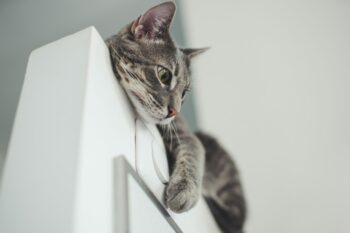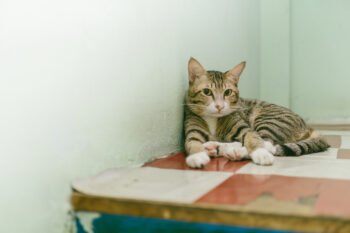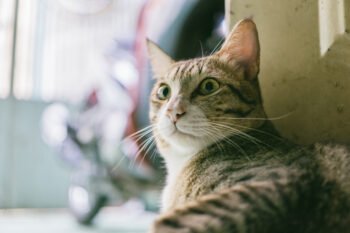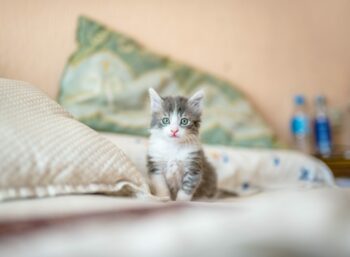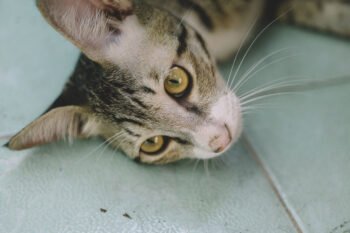No matter how adventurous your cat, it’s confronted by many risks the second it steps foot outside. The Humane Society of the United States estimates a free-roaming cat might live as few as three years, compared to 12 to 15 years for an indoor-only cat.
For much of feline history, cats roamed freely, serving as handy rodent-catchers around grain crops. As the years went on, people brought cats indoors, again relying on felines to reduce numbers of unwanted vermin. The cat’s role today has primarily evolved to that of a beloved companion, which needs and deserves our protection. The situation benefits both people and cats, since an indoor cat is a safer cat. Most feline fanciers are getting the message. About two-thirds of the estimated 90 million cats in the United States alone reside indoors.
However, cats need more than just the security of staying inside. It’s up to you to provide an environment that meets the needs of your indoor cat. The Indoor Cat Initiative, an Ohio State University College of Veterinary Medicine project, is designed to help you understand just what your indoor cat requires and how you can easily help it live a happy, healthy life. “As long as we’re going to have cats indoors, we certainly have the responsibility to keep them in the most enriched situation possible,’’ says Tony Buffington, DVM, Ph.D, director of the Indoor Cat Initiative.
The Initiative’s website offers basic advice for meeting your indoor cat’s requirements. You can also order a DVD from the site. You’ll be in tune with your cat’s needs, says Dr. Buffington, if you provide your house cat with these eight inside essentials:
- Exercise Many veterinarians, such as Elizabeth Colleran, DVM, MS, of Chico, Calif., are concerned about the number of overweight felines they see in their practices. Dr. Colleran suggests providing “an abundance of cat toys. Having just one cat toy is silly.” The Indoor Cat Initiative advises understanding your cat’s prey of choice. Would your pal rather romp after an object that moves in the air? A furry toy? A laser light? Pay attention to your cat’s playtime preferences and buy accordingly.
- Mental stimulation Playing with your feline during the day offers additional benefits, says Dr. Colleran. You’ll engage your cat mentally, which will help to keep your pal alert and involved with its surroundings. Your cat, nocturnal by nature, will also be less likely to keep you up during the night. Allowing your cat to hunt for food you’ve placed around the house also provides stimulation, she says. Don’t forget to offer your pet at least one room with a view. Cats love to watch outdoor activity.
- Something to scratch Determine, just by observation and experimentation, what material your cat enjoys under its paws, says Dr. Colleran. Some cats scratch vertically, while others prefer to scratch horizontally. A scratching post needn’t be fancy. It can be a simple homemade device, created by nailing or stapling some scratching material, such as a carpet remnant, to a piece of plywood. Just be sure no sharp nails or staple points protrude before you present it to your clawed friend.
- A place of its own Your cat needs a space where it feels safe and secure. Make sure food, water and litter are not located where another animal or person can sneak up or surprise your cat. The Indoor Cat Initiative suggests placing dishes and the litter box away from appliances or air ducts that might suddenly turn on, startling your cat.
- Something to climb “People don’t think about cats operating in three dimensions,’’ says Dr. Buffington. “They need to climb. That’s part of their natural behavior. But people often don’t want them to climb on certain things.” Dr. Buffington believes cat owners often neglect to provide their cats a suitable alternative. You can purchase commercial perches and roosts for cats or, suggests Dr. Buffington, a six-foot pine ladder, if you don’t mind the unusual addition to your décor.
- Clean, fresh litter Litter should be scooped daily and cleaned regularly, with each cat provided with its own box. Offer an ample-sized box, advises Dr. Colleran, who has written several papers about indoor cats. Select one of the bigger litter boxes you find on the shelf at your local pet store. Most large boxes measure around 18.5 inches in length and 15.25 inches in width, or more. Keep clutter and debris cleared from around the box. “Cats are really fastidious. They like their bathrooms clean, and they need a great, big litter box.”
- Fresh grass or catnip Offer your cat something green to graze on, as it would chomp on grass outdoors.
- Choice Cats enjoy choice, says Dr. Buffington. For instance, before you make a decision to change cat litter brands, place samples of both old and new for your cat to try. At mealtime, try offering two different-flavored foods side by side to see which one might be your pet’s fave.
Perhaps the most important thing you can do, according to Dr. Buffington, is to recognize when your indoor cat is healthy and engaged in its environment. If your indoor cat is alert and energetic, those are good signs that you are providing for its needs. “Learn to become a good cat observer,” he advises.

